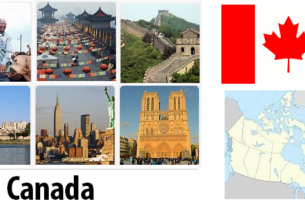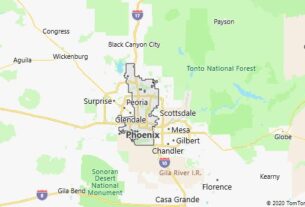HISTORY: COLONIZATION
Before the arrival of the Europeans, the territories that now form Canada, completely unrelated to each other, were sparsely inhabited by nomadic Indian tribes. Around the year 1000 the Norman Leif Ericssonn arrived there, the first European, but the real discovery dates back to 1497, by Giovanni Caboto in the service of Henry VII of England. Cod fishermen began to frequent Canadian waters after a few years, but never went inland; the first explorations were therefore carried out, between 1534 and 1536, by the Frenchman Jacques Cartier, who, in addition to visiting Terranova and Prince Edward Island, went up the San Lorenzo River to the place where today is Montréal. Subsequent attempts at colonization, made by Cartier himself (1541) and by François de Roberval de la Roche, failed. The actual colonization began with the arrival of the Frenchman Samuel de Champlain, determined to establish a colony that would provide a new field of commercial and evangelizing activities and that would be the basis for a new route across the Pacific to China. Port Royal, the first colony of Champlain, neglected by France and exposed to attacks by the British, had a difficult life, while Québec, after a hard start, it developed better. The first attempt to organize the colony, which had been given the name of New France, was by Richelieu, who in 1627 constituted the Company of New France which, in exchange for the task of providing for the population and government of the country, was granted a monopoly on the traffic of furs by way of feudal lordship. The government of the Company (which at the time of its dissolution had installed no more than a thousand settlers in the territory and founded the stations of Québec, Trois Rivières and Montréal) was replaced in 1663 by the direct one of France which, trying to organize a absolute, prevented the formation of civil self-awareness that characterized the experience of the English colonies. However, between 1665 and 1763 the colony developed rapidly: the population increased from 2000 to 65,000 units. The demographic expansion led to a territorial expansion that led the French to clash with the Indians, Iroquois.
HISTORY: THE ANGLO-FRENCH WARS
After 1713 explorers, missionaries and traders went up and colonized the San Lorenzo River, pushing as far as Lake Michigan from which the Mississippi began to descend. This gave rise to the ambitious project of building a great empire from the San Lorenzo estuary, along the Mississippi to New Orleans, which would however cut off the British colonies from expanding to the west. This threat, added to numerous other causes of local friction and the clash between British and French interests in Europe, led to the colonial wars that were resolved with the conquest of New France by the British and with the end of French America itself. The Peace of Utrecht (1713) sanctioned the passage to Great Britain of Acadia and Terranova; the Peace of Paris (1763), which ended the Seven Years’ War, determined the cession of all New France to the English. It was difficult to organize the coexistence between the losers and the winners and sometimes the absorption of one by the other was impossible.
HISTORY: THE “QUEBEC ACT”
In 1774 the English Parliament passed the “Quebec Act”, which defined the legal-administrative status of the colony and guaranteed the rights of Franco-Canadians, creating a solidarity of interests of the elites French (thus the Catholic Church retained a very strong influence on the Franco-Canadians). This situation had considerable consequences on the subsequent events of the country and contributed to the failure of the invasion attempt by the Americans (1775-76). However, the American Revolution had a fundamental influence on Canadian history. The arrival of forty thousand loyalists in fact introduced the customs of autonomy of the Anglo-Saxon colonies and also substantially changed the numerical relationship between the element of English and French origin, making the system established by the “Quebec Act” obsolete. According to constructmaterials, the English Parliament then, with the “Constitutional Act” of 1791, reorganized the colony, which was divided into the two provinces of Upper Canada (English) and Lower Canada (French). Both were endowed with representative institutions, but not yet self-governing. There Anglo – American war of 1812, despite having been fought mainly in Canada, caused no other significant consequence than the radicalization of the contrast between American immigrants and old loyalist immigrants, who formed an elite united by economic and family ties, indicated by the name of Family Compact.
Whitehorse
Whitehorse [ wa ɪ th ɔ ː s], capital of the Yukon Territory, Canada, the Yukon River and the Alaska Highway, 25 100 residents; catholic bishopric; Museum; v. a. Tourism; in the area ore mining (silver, copper, lead); Airport.
Since 1900 permanent settlement as a supply and traffic center.
Iqaluit
Iqaluit [ ɪ kə l ʊ ɪ t], formerly Frobisher Bay [ frə ʊ b ɪ ʃ ə be ɪ ], the administrative center of the Nunavut Territory, Canada, 5200 residents, in the south of Baffin Iceland, at the inner end of the 230 km long Frobisher Bay. – Established in 1943 as a US air force base.




